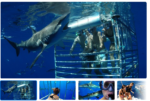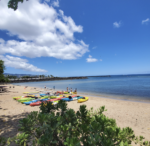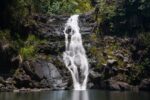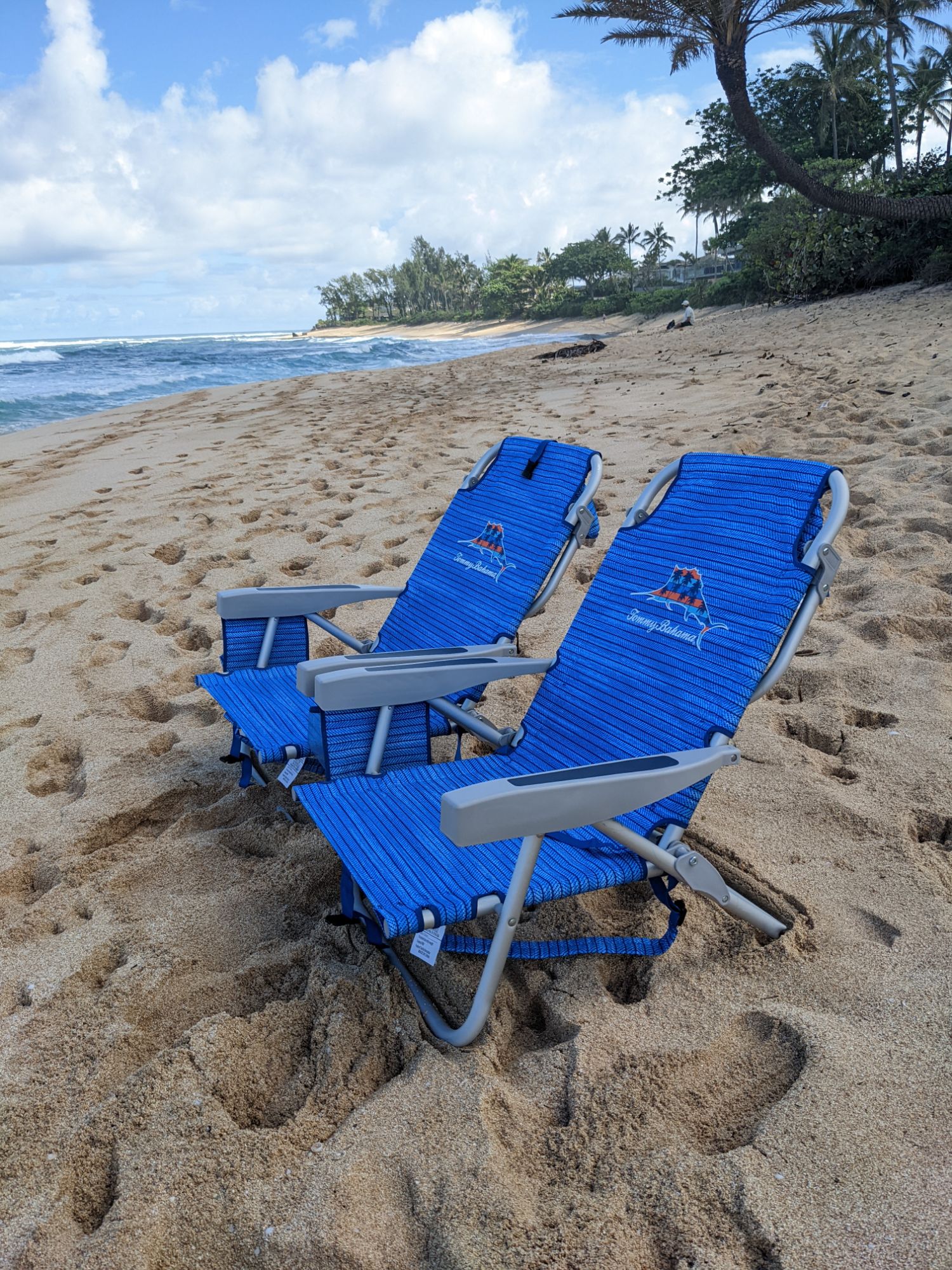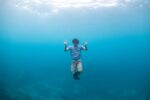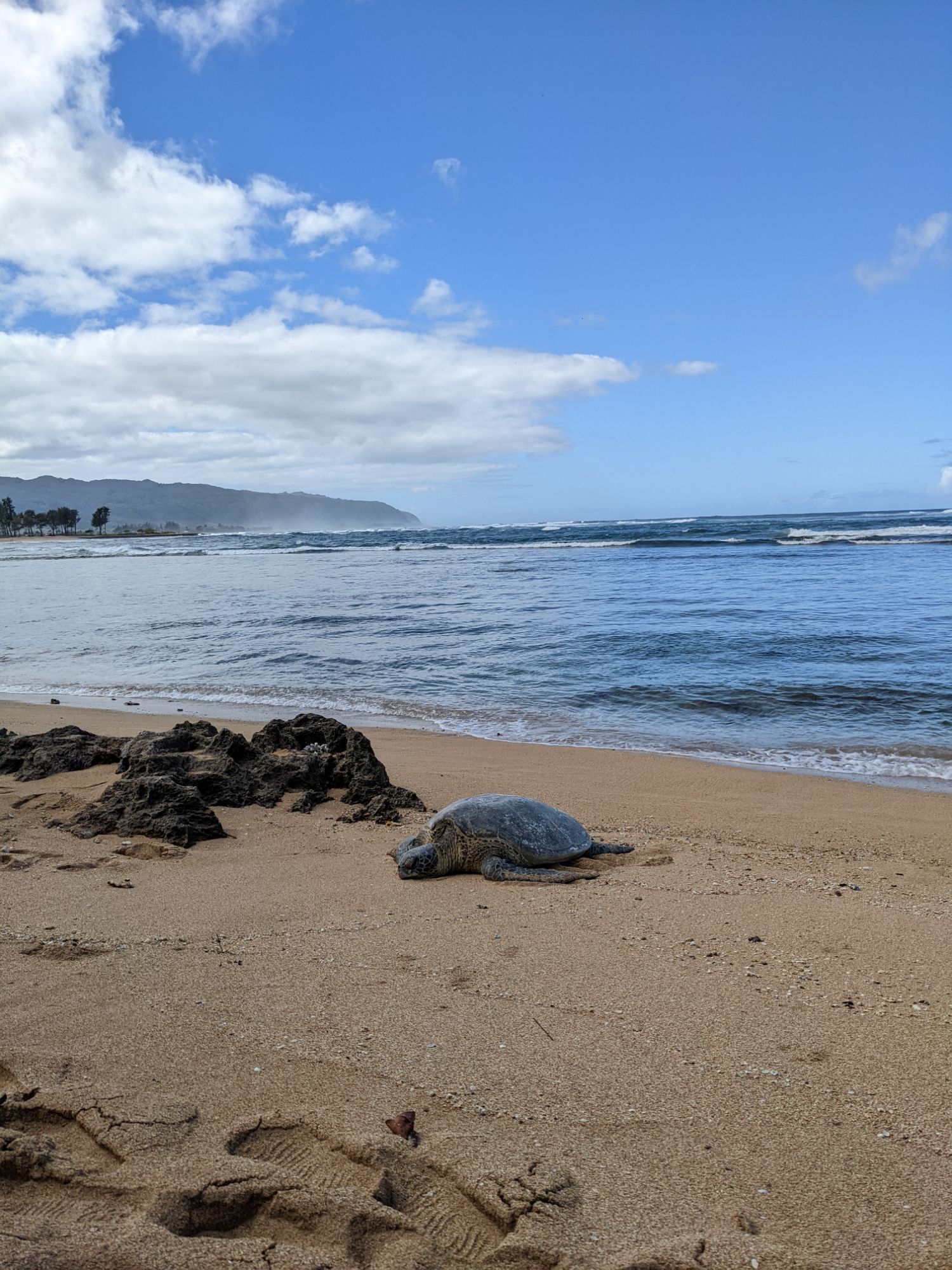
I’ll never forget the first time I saw a Laysan Albatross at Ka’ena Point. The sky was ablaze with the soft hues of sunset – light blue melting into light orange – and these magnificent birds were soaring effortlessly, their large wings catching the fading light. It was a scene of pure peace. Ka’ena Point, a haven where they rest their wings during the winter months, before continuing their long journeys. Yet, I couldn’t help but wonder about the stories this land holds. They say that long ago, the island was so covered with albatrosses that the land itself was hidden from view. A world entirely different from the one we see today. That serene moment at Ka’ena Point belies a troubling reality: Like many Hawaiian seabirds, the Laysan Albatross faces significant threats to its survival, both on land and at sea. This blog is about understanding that lost world and working to protect what remains.

The Plight of Hawaiian Seabirds: A History of Threats
Hawaiian seabirds face significant conservation challenges both at their nesting sites and in the open ocean. The long distances they travel in search of food often lead to starvation, a problem exacerbated by climate events like El Niño that disrupt food availability (Papahānaumokuākea Marine National Monument, n.d.a). Natural predators also take a toll, as do harsh weather conditions that can wipe out eggs and chicks.
However, human-caused threats are even more severe. Historic harvesting of eggs and chicks likely limited nesting bird populations (Papahānaumokuākea Marine National Monument, n.d.a). Commercial exploitation in the 1800s decimated populations and the introduction of species like rabbits, rats, mongooses, and feral cats devastated island ecosystems, threatening species like the Hawaiian Petrel and Newell’s Shearwater. This commercial exploitation marked a devastating turning point, accelerating the decline from the “lost world” of abundant seabirds to the precarious situation they face today.

From Exploitation to Protection: A Legacy of Conservation
Recognizing the crisis, the U.S. government began implementing protective measures. In 1903, Midway Atoll was placed under Navy control to stop poaching. President Theodore Roosevelt later established the Hawaiian Islands Reservation (later the Hawaiian Islands National Wildlife Refuge) in 1909 to further protect the Northwestern Hawaiian Islands (Papahānaumokuākea Marine National Monument, n.d.b; U.S. Fish & Wildlife Service, n.d.). Concerns about commercial fishing led to further protections, culminating in the creation of the Northwestern Hawaiian Islands Coral Reef Ecosystem Reserve, a fishing ban in state waters, and the Papahānaumokuākea Marine National Monument (Papahānaumokuākea Marine National Monument, n.d.c). President George W. Bush expanded protections in 2009 by creating three more national monuments in the central Pacific, American Samoa, and the Northern Mariana Islands (George W. Bush Presidential Center, n.d.).
Hope for the Future: The Ongoing Conservation Battle
Despite these vital protections, significant challenges remain. Threats include vessel groundings, marine debris entanglement, plastic ingestion by seabirds, and mortality from longline fishing. Furthermore, rising sea levels due to climate change pose a serious risk to low-lying nesting islands.
Scientific research plays a crucial role in protecting and managing seabird populations. Advances in science have greatly enhanced our understanding of seabird conservation.
Resources:
- George W. Bush Presidential Center. (n.d.). A commitment to conservation. Retrieved from https://www.bushcenter.org/events-and-exhibits/a-commitment-to-conservation#:~:text=President%20Bush%20went%20on%20to,Bush%20Presidential%20Museum.
- Papahānaumokuākea Marine National Monument. (n.d.a). Historic egg harvesting laysan. Retrieved from https://www.papahanaumokuakea.gov/monument_features/historic_egg_harvesting_laysan.html
- Papahānaumokuākea Marine National Monument. (n.d.b). Theodore Roosevelt. Retrieved from https://www.papahanaumokuakea.gov/monument_features/historic_roosevelt.html#:~:text=Theodore%20Roosevelt%20took%20the%20first%20action%20to%20protect%20the%20region,National%20Wildlife%20Refuge%20in%201940.
- Papahānaumokuākea Marine National Monument. (n.d.c). Tenth anniversary. Retrieved from https://www.papahanaumokuakea.gov/tenth/ (Note: This source may need to be replaced with a more specific one if it doesn’t directly support the statements about the creation of the reserve, fishing ban, and monument.)
- Shallenberger, R. J. (2005). Hawaiian birds of the sea: Na manu kai. University of Hawai’i Press.
- U.S. Fish & Wildlife Service. (n.d.). Hawaiian Islands National Wildlife Refuge. Retrieved from https://www.fws.gov/refuge/hawaiian-islands
- Digital Archives of Hawaiʻi. (n.d.). Islands – Laysan [Image 1 of 3]. Retrieved from https://digitalarchives.hawaii.gov/item/ark:70111/0gnM
- Digital Archives of Hawaiʻi. (n.d.). Islands – Laysan [Image 2 of 3]. Retrieved from https://digitalarchives.hawaii.gov/item/ark:70111/0gnt
- Digital Archives of Hawaiʻi. (n.d.). Islands – Laysan [Image 3 of 3]. Retrieved from https://digitalarchives.hawaii.gov/item/ark:70111/0gnF

